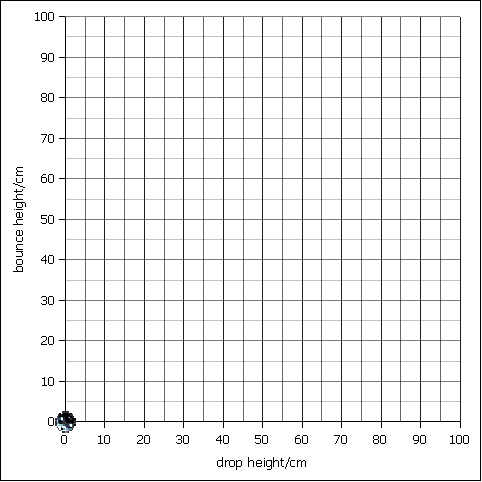Science Program Student Learning Outcomes Evaluation
Gender:
___ Female
___ Male |
State:
___ Chuuk
___ Kosrae
___ Pohnpei
___ Yap
___ Other |
Year:
___ Freshmen
___ Sophomore
___ Junior
___ Senior
___ Other |
Major: ______________________
High School: ______________________
Elementary School:________________
Course in which evaluation was taken: ______________ |
Science Program Learning Outcomes Evaluation
Part One
- The instructor will perform a demonstration at the front of the room. The instructor will place a loose sheet of stiff paper cut from a file folder on top of a glass full of water. The instructor will then turn the glass upside down and let go of the piece of paper. What will happen next?
- The instructor will now perform the demonstration. What happened?
- Why did this happen?
Part Two: Work in pairs

Experimental Procedure
- Hold the ball center 30 centimeters above the table in front of a vertical meter stick.
- Drop the ball.
- Measure the maximum height of the first bounce.
- Record the drop height and bounce height in centimeters in the table below. The first data row is already completed for you: a ball dropped from a height of 0 centimeters will bounce 0 centimeters.
- Repeat the procedure for 70 cm and 100 cm.
Table
| Drop Height/cm | Bounce Height/cm |
|---|
| 0 | 0 |
| 30 | ____________ |
| 70 | ____________ |
| 100 | ____________ |
Graphing the Data
Plot the data obtained above on the graph below. Use the drop height for the x-axis values, the bounce height for the y-axis values. The golf ball dropped from a height of 0 cm is already plotted on the graph at (0, 0)

Predictions
- Draw a line through the points.
- Use the line through the points to estimate about how high a ball dropped from 50 centimeters should bounce.
For 50 centimeter drop height, the bounce height would be:
- Use the line through the points to estimate from about how high a ball would have to be dropped for it to bounce 30 centimeters.
For 30 centimeter bounce height, the drop height would be:
Calculations
Use the data from the highest drop to determine the coefficient of rebound. Calculate the coefficient of rebound by dividing the bounce height for 100 cm by 100 cm:
coefficient of rebound = bounce for 100 cm drop ÷ 100 = ____________
By dropping a golf ball out of the northwest window of the COM-FSM gym behind the bleachers one can obtain a drop height of 678 cm. Can you use the coefficient of rebound to calculate the bounce height for this golf ball?
Drop height = 678 cm. Bounce height = ________________
Concepts: Answer if you can.
- What type of energy does the golf ball possess when held aloft just prior to being dropped?
- What type of energy does the golf ball possess in the instant just prior to hitting the floor?
- What is the name of the scientific theory that suggests that the amount of energy the ball had when aloft prior to being dropped should be equal to the energy the ball has as its hits the floor?
- Why does not the ball bounce as high as it was dropped?


